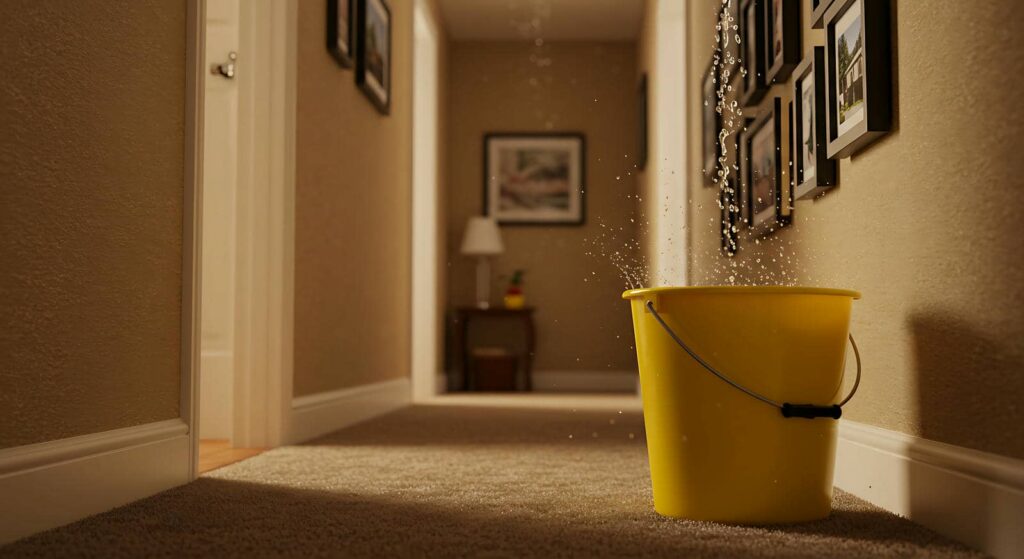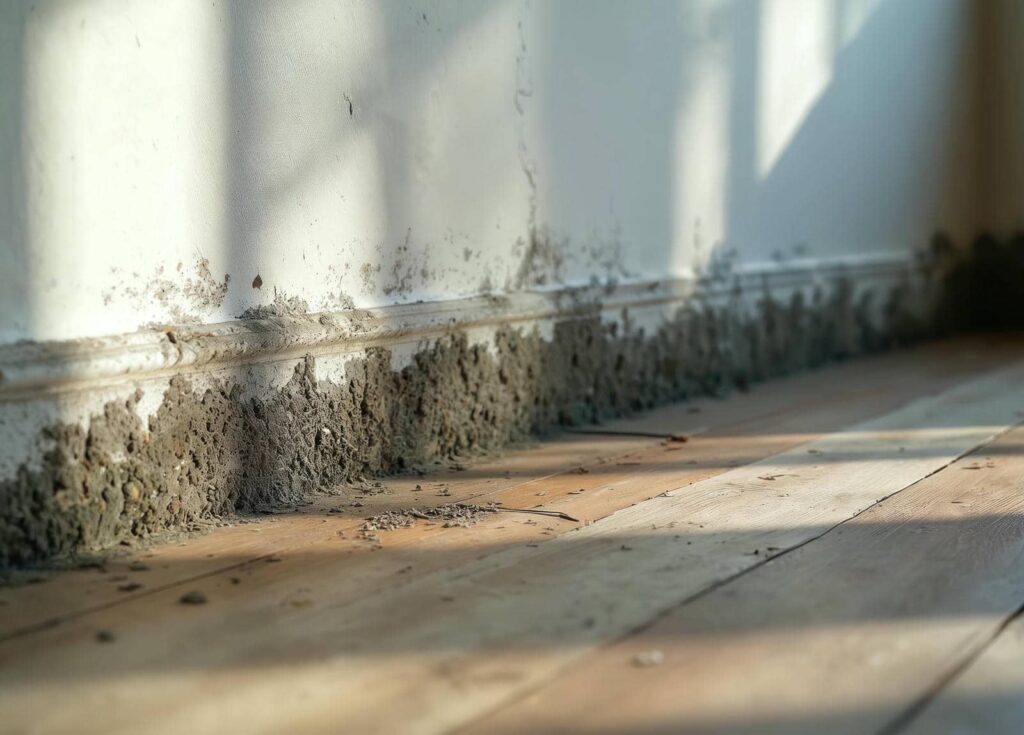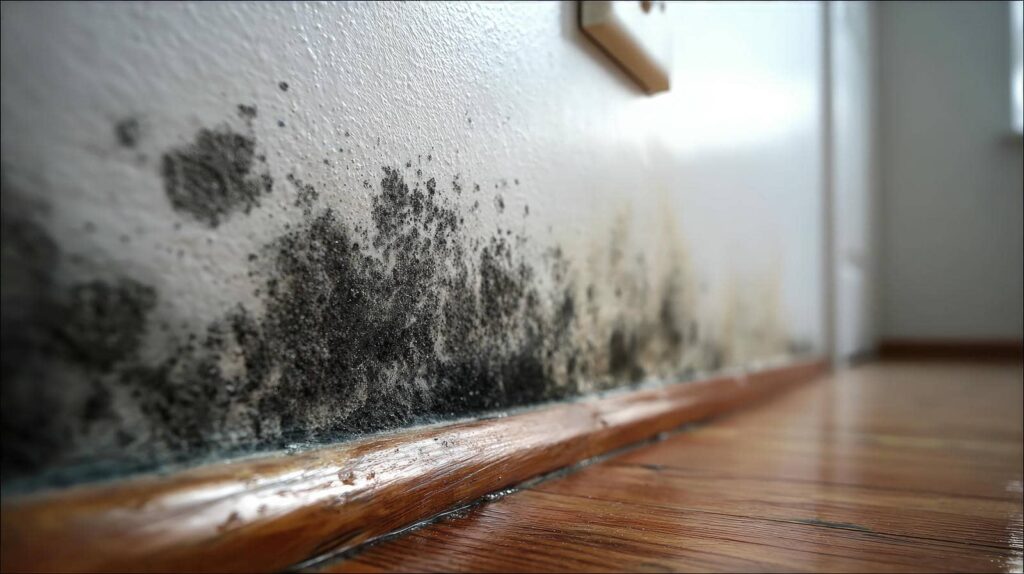Contents
When faced with mold issues, you must consider the most effective removal methods to safeguard your health and property. From identifying the affected areas to implementing preventive measures, each step plays an essential role in ensuring a thorough mold removal process. But what are the best techniques to tackle mold infestations effectively? Let’s explore the key strategies that can help you combat mold growth and create a healthier living environment.
Identifying the Mold-Affected Areas
Identifying the mold affected areas is indispensable in effectively addressing the issue. When dealing with mold problems, it’s vital to conduct a thorough inspection of your home.
Begin by examining common areas where mold tends to flourish, such as bathrooms, kitchens, basements, and areas with poor ventilation. Look for visible signs of mold growth, including black spots, musty odors, and water stains on walls or ceilings. Pay close attention to areas that have experienced water damage or leaks in the past, as these are prime locations for mold to develop.
In addition to visible signs, it’s important to check hidden spaces like behind drywall, under carpets, and inside cabinets. Mold can spread rapidly in dark, damp environments, so be meticulous in your inspection. Use a flashlight to peer into dark corners and crevices where mold may be lurking out of sight.
Consider hiring a professional mold inspector if you’re unsure about the extent of the problem. These experts have the tools and expertise to detect mold in hard-to-reach places and can provide valuable insights into the best course of action.
Containment and Isolation Measures
To effectively address mold issues in your home, implementing containment and isolation measures is vital. Containment involves creating barriers to prevent mold spores from spreading to unaffected areas during the removal process. Begin by sealing off the affected area with plastic sheeting and tape to contain the mold spores. It’s essential to cover any vents, ducts, or openings that could allow the spores to escape and contaminate other parts of your home. Additionally, using a negative air machine with a HEPA filter can help capture airborne mold spores, further preventing their spread.
Isolation measures focus on safeguarding the health of you and your family by minimizing exposure to mold spores. Before starting the removal process, equip yourself with personal protective equipment such as gloves, goggles, and a mask to prevent inhalation or skin contact with mold.
Consider setting up a decontamination area outside the containment zone where you can remove and bag your protective gear before exiting to prevent spreading mold spores to clean areas.
Removal of Contaminated Materials
When removing contaminated materials affected by mold, it’s important to evaluate proper disposal methods to prevent further spread of spores. Cleaning and sanitizing the affected areas is vital to eliminate any remaining mold particles and prevent regrowth. Following thorough cleaning, it’s essential to inspect for any signs of lingering mold and address them promptly to ensure a mold-free environment.
Material Disposal Methods
Proper material disposal methods are vital when it comes to effectively removing contaminated materials during the mold removal process. When disposing of materials affected by mold, it’s essential to handle them with care to prevent further contamination.
Start by double-bagging the mold-infested materials in heavy-duty plastic bags to contain spores and prevent spreading them to other areas. Seal the bags tightly before removing them from the contaminated space to avoid releasing mold particles into the air.
Once sealed, promptly transport the bags to an appropriate disposal site, such as a landfill that accepts mold-contaminated materials. Make sure to follow local regulations and guidelines for disposing of mold-infested materials properly.
Remember that mold-contaminated materials should never be mixed with regular household waste to prevent the spread of mold to other areas. By practicing safe and effective material disposal methods, you can help ensure a thorough and successful mold removal process.
Cleaning and Sanitizing
For effective mold removal, the cleaning and sanitizing process plays a significant role in eliminating contaminated materials from your environment. When tackling mold growth, it’s essential to wear protective gear like gloves, goggles, and masks to prevent exposure.
Begin by scrubbing surfaces with a mixture of detergent and water to remove visible mold. For porous materials like drywall or insulation that are heavily contaminated, disposal may be necessary.
Non-porous surfaces can be sanitized using a solution of bleach and water, making sure to ventilate the area properly during this process. After cleaning, thoroughly dry the area to prevent mold regrowth.
Remember to inspect hidden areas like behind walls or under carpets, as mold can thrive in these spaces. If the mold infestation is extensive or recurring, seeking professional help is recommended to ensure thorough removal and prevention measures are taken.
Mold Disinfection and Cleaning Techniques
When addressing mold in your environment, remember that disinfecting mold surfaces is vital to prevent regrowth. Using effective cleaning products specifically designed to combat mold can make a significant difference in eradicating the issue. Understanding the proper techniques for mold disinfection and cleaning is essential for a successful remediation process.
Disinfecting Mold Surfaces
To effectively combat mold growth on surfaces, it’s essential to utilize proper disinfection and cleaning techniques. Mold can be a persistent issue, but with the right methods, you can keep it at bay. Here are some tips to help you disinfect mold surfaces effectively:
Use a mixture of water and detergent: This simple solution can work wonders in cleaning mold off surfaces.
Try a vinegar solution: Vinegar is a natural disinfectant that can help eliminate mold spores.
Consider using hydrogen peroxide: Hydrogen peroxide is effective in killing mold and is safe for most surfaces.
Use a bleach solution: Bleach is a potent disinfectant that can effectively kill mold, but be cautious and follow safety guidelines.
Effective Cleaning Products
When combating mold growth on surfaces, selecting the right cleaning products and techniques is essential for effective disinfection. To help you choose the best products, here is a table outlining some effective cleaning solutions for mold removal:
| Cleaning Product | Best Used For |
|---|---|
| Vinegar | Non-porous surfaces |
| Hydrogen Peroxide | Porous surfaces |
| Bleach | Tiles and grout |
| Baking Soda | Stubborn mold stains |
| Tea Tree Oil | Natural disinfectant |
Each of these cleaning products has unique properties that make them suitable for different types of surfaces and levels of mold infestation. Remember to always wear protective gear like gloves and a mask when handling mold and cleaning products. Additionally, make sure proper ventilation in the area you are cleaning. By using the right cleaning products for the job, you can effectively remove mold and prevent its regrowth in your living spaces.
Ensuring Proper Ventilation and Drying
Proper ventilation and thorough drying are vital steps in effectively removing mold from your home. Mold thrives in damp, poorly ventilated areas, so ensuring proper airflow and drying out affected spaces is essential to prevent its return. Here are some key tips to help you in this process:
Open Windows and Doors: Allow fresh air to circulate through the space, helping to reduce humidity levels and speed up the drying process.
Use Fans: Position fans strategically to improve air circulation and aid in drying out wet surfaces faster.
Dehumidifiers: Consider using a dehumidifier to help control moisture levels in the air, creating an environment less favorable to mold growth.
Sunlight Exposure: If possible, expose affected areas to natural sunlight, as UV rays can help inhibit mold growth and aid in drying out damp surfaces.
Post-Removal Inspection and Prevention
Regular examination and proactive prevention are key steps in maintaining a mold-free environment after the removal process. Once mold has been eliminated, it’s critical to conduct routine checks in areas previously affected.
Inspecting for any signs of moisture or mold regrowth is essential to preventing a reoccurrence of the issue. Pay special attention to areas prone to dampness, such as basements, bathrooms, and kitchens.
During post-removal inspections, verify that ventilation systems are operating correctly to promote proper airflow and prevent excess moisture buildup. Check for any leaks in plumbing or roofs that could result in water seepage, creating a favorable environment for mold growth.
Addressing these issues promptly can help in avoiding future mold problems.
Incorporating preventive measures is also crucial in keeping mold at bay. Consider using dehumidifiers in areas with high humidity levels and ensuring proper insulation to prevent condensation.
Regularly clean and maintain gutters to prevent water accumulation around the foundation of your home. Additionally, using mold-resistant products for renovations or repairs can help in deterring mold growth.
Wrap-Up
Now that you’ve successfully completed the mold removal process make sure to keep an eye out for any recurring signs of mold growth. Remember, prevention is key to maintaining a mold-free environment. Stay vigilant and address any moisture issues promptly to avoid future mold problems. And always remember, an ounce of prevention is worth a pound of cure when it comes to dealing with mold in your home. Stay proactive and keep your space clean and healthy.




